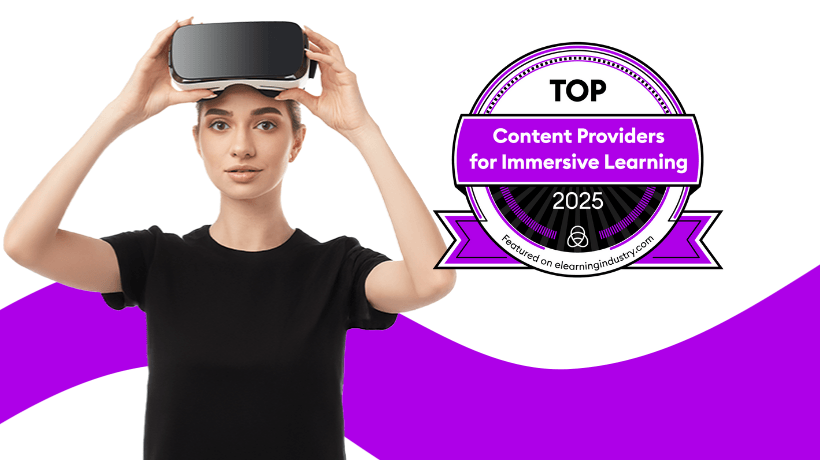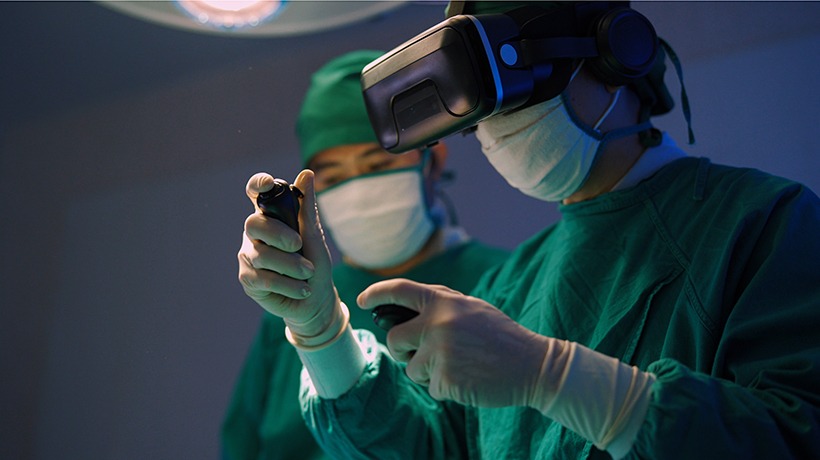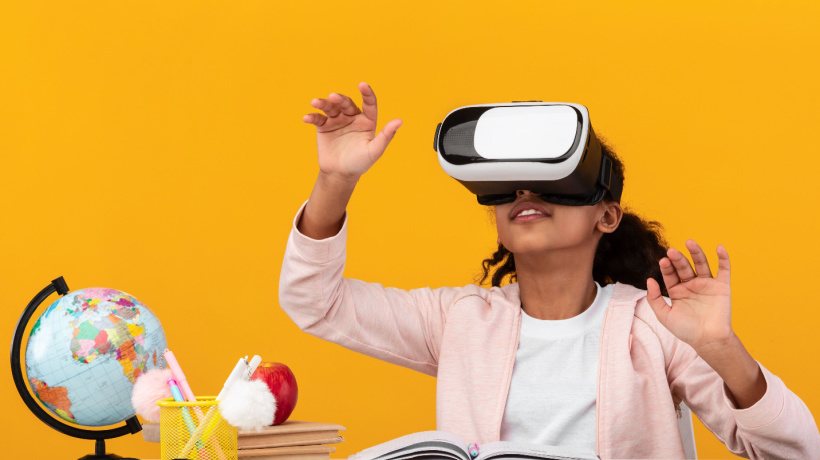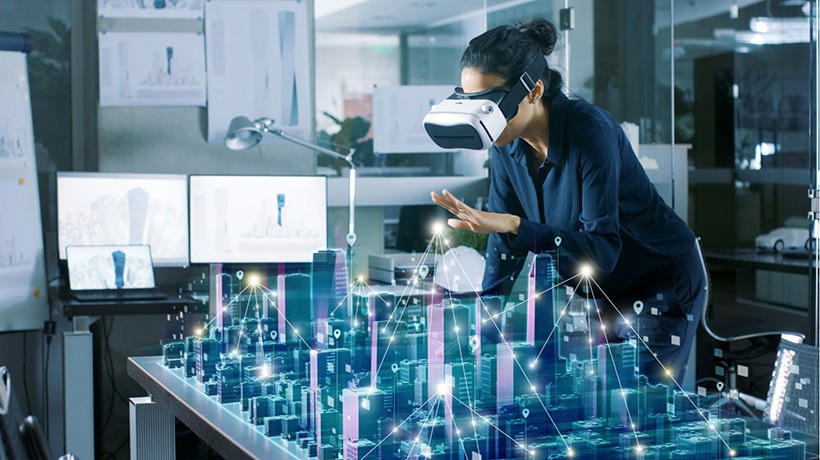Creating Impactful Immersive Learning With SweetRush
For the past few months, I’ve been writing a series of articles on emerging technologies, including Virtual Reality (VR) and Augmented Reality (AR), and how more accessible and affordable devices are bringing the dream of immersive learning within the reach of Learning and Development (L&D) organizations. In the past several years, technology has transformed how we teach people and how people learn. Think about the evolution and adoption of eLearning, simulations, and game-based learning—all offering higher levels of interactivity and engagement. Now, we have new tools at our disposal that can help us achieve truly immersive learning. Recently, I had the opportunity to introduce these new technologies to L&D professionals at the Learning Technologies conference in London. The buzz around immersive learning is palpable—putting on a VR headset or seeing AR for the first time can be mind-blowing. But learning professionals are a smart bunch, and they like to cut to the quick—which means I’m constantly asked the all-important question: Does it actually work? Said another way, Is this just cool stuff or is it an impactful and effective way to learn?
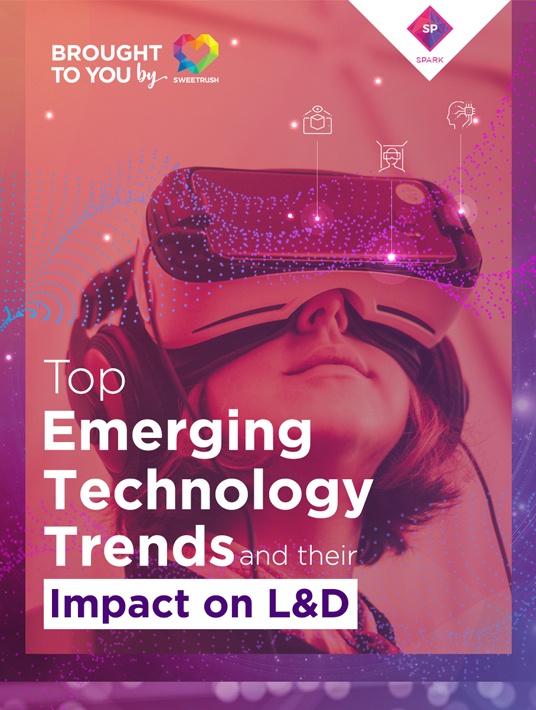
Before I get to the answer, let’s consider that immersive learning has 2 important advantages out of the gate:
- Right now, immersive learning is new and cool. Though there might be some trepidation (particularly with VR), on the whole, learners are going to be excited about it. And consciously or subconsciously, employees may feel positively toward their company for providing them with this innovative, new way to learn.
- Immersive learning reduces and, in some cases, eliminates distractions. Lack of focus is the enemy of retention. We know we can make more of an impact if we can capture their attention.
Now, these are advantages, but they don’t guarantee that immersive learning will be effective. If we want to design effective immersive learning, we need to get back to basics.
Immersive Learning: Start With The Basics
Learning interventions—regardless of delivery modality and use of technology—are always going to be more effective when we start with the basic tenets of Instructional Design and User Experience.
As designers, we must have a solid understanding of:
- The business/organizational objectives you are trying to achieve
- The target audience (learners)—demographics, environment, the context they have for the learning, why it will be important to them, etc.
With VR, we often need to dig even deeper into the latter than what might be sufficient for Instructor-Led Training or eLearning. When we’re creating a custom, 3D environment in VR that mimics or relates to the learners’ work environment, we need it to feel as relevant as possible so that a level of authenticity is achieved.
When choosing a vendor-partner to develop immersive learning, you should feel confident they’re applying the rigor and foundation of Instructional Design and not just creating something “cool” for your learners.
Analysis: A Key Step For Immersive Learning
Uncovering the objectives and stepping into the shoes of both stakeholders and learners does take time. Think of it as an up-front investment that will save you time in the end. When you shop for a car, you spend time thinking about how you will use the car and what features are important to you, right? If you didn’t take that time up front, you could end up with a car that doesn’t suit your needs. This is why we often recommend to first engage a low-cost analysis phase for immersive learning projects (and really for most of our custom projects). The analysis may focus on a series of interviews with stakeholders and learners or include experiential design thinking strategy sessions. The outcome of the analysis is a solid, documented understanding of what the immersive learning needs to accomplish, who it should be tailored to and how (often with initial mock-ups or sketches), and how the immersive learning will work. We also look at resources and constraints to determine the best options for equipment and content distribution, which have their own complexities with immersive learning. It's worth stating that through analysis, we may discover that there is a better way to achieve the objectives and that immersive learning is not the right solution! With analysis, we’re starting with the end in mind, and are now set up to design and develop immersive learning that achieves our clients’ goals.
The Immersive Learning Journey
With all of the excitement and buzz around emerging technologies, it’s easy to forget that VR, AR, and AI are essentially additional tools in our vast L&D tool chest. Choosing the right tool comes back to the objectives and audience. And often the solution with the most impact is not just one type of training, but a blend of different learning modalities. Why? When we design a program, we need to think about learning as a journey, rather than a one-time event. Context setting and preparation, knowledge transfer, practice and application, and ongoing reinforcement need to be considered for any type of learning, including immersive. The most effective, impactful program for your learners might include, for example, eLearning or video prework, an instructor-led workshop with a VR or mixed reality component for practice and debrief, a small-group AR card game for peer-based learning, an AI virtual assistant for Performance Support, and follow-up coaching sessions. Sign me up!
Go Forth And Create Impactful Immersive Learning
All of this may seem obvious, but the Instructional Design and User Experience principles I’ve shared here can get swept away in the excitement and enthusiasm surrounding new technologies. There’s a lot to consider with the technology itself; new equipment, techniques, and approaches are rapidly emerging that can improve the experience, increase quality, and lower cost. Don’t let the newness derail from the fundamentals. If our goal is the same—we want learning to be effective—we have to apply the same discipline and rigor (and creativity!) to immersive learning that we do (or should be doing) with every other type of learning. So, does immersive learning work? My answer is, Yes it can! And it can potentially be more impactful and effective than other types of learning, because of its inherent ability to immerse us in the learning and reduce distractions. But we must take the time to be thoughtful and care about who and how we teach—it’s essential if we want to make a positive impact on organizations and people through learning.
Download the eBook Top Emerging Technology Trends And Their Impact On L&D to see how the emergence of virtual reality and augmented reality can open up new ways of working for L&D professionals. Learn why they are new powerful tools in teaching and affecting behavioral change and how they can help you achieve your business objectives.
If you want to discover more fantastic features you need to implement Virtual Reality in your organization, check out the webinar Virtual Reality: Real-World Hilton/SweetRush Project Case Studies. It is brought to you by SweetRush and teaches everything you need to know to run an exceptional VR learning program.



